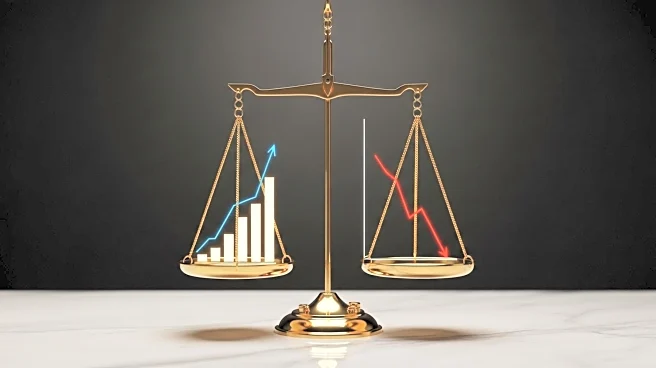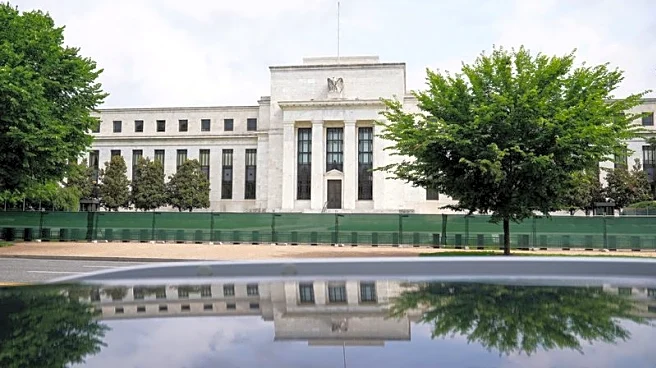What's Happening?
The Federal Reserve has reduced interest rates by a quarter of a percentage point, responding to concerns about a weakening U.S. job market. This decision, supported by 11 of the 12 central bankers, including Fed Chairman Jerome Powell, marks a shift in focus from inflation concerns to labor market stability. Stephen Miran, a recent appointee and former economic adviser to President Trump, dissented, advocating for a larger half-point cut. The rate cut comes amid ongoing pressure from President Trump, who has criticized Powell for not lowering rates sooner. The Fed's decision reflects a strategic move to manage risks associated with a slowing labor market, despite inflationary pressures from tariffs.
Why It's Important?
The rate cut is significant as it indicates the Fed's prioritization of labor market stability over inflation control, a shift that could influence economic policy and market dynamics. The decision may provide relief to businesses and consumers through lower borrowing costs, potentially stimulating economic activity. However, it also highlights the challenges faced by the Fed in balancing growth and inflation, especially with external pressures such as tariffs. The move could impact financial markets, as evidenced by the initial surge in the Dow Jones Industrial Average following the announcement. Stakeholders, including businesses and investors, will closely monitor the Fed's future actions, as further rate cuts are anticipated.
What's Next?
The Federal Reserve is expected to continue its rate-cutting strategy, with additional reductions likely in October and December. This approach aims to support the labor market and sustain economic growth. The Fed's actions will be scrutinized by political leaders, businesses, and investors, who will assess the implications for economic stability and inflation. The central bank's independence may also be a topic of discussion, given the political pressures it faces. Future economic data and geopolitical developments will play a crucial role in shaping the Fed's monetary policy decisions.











